The Gladwell "ethnic theory" focuses heavily on national PDI culture: Gladwell makes the specific point of saying "here are the top five pilot PDIs by country. If you compare this list to the ranking of plane crashes by country, they match up very closely". This does rather leave open the question of exactly where this "ranking of plane crashes by country" is to be found, since no source is given to enable the reader to see what relevance it has to crew errors. Neither does he mention that the 19 countries covered by Ashley Merritt's pilot-specific survey represent only 10% of the 191 member states in ICAO.
Merritt adapted Hofstede's basic technique to the special conditions of the pilot workforce, for which many aspects of Hofstede's "general population" study would be irrelevant. For example, "power-distance" (e.g. automatic respect for superiors when at work) is almost always higher in pilots than other workers simply because the Captain DOES have the final say, and "uncertainty avoidance" (e.g. respect for written rules) is also higher, as pilots are highly trained to use checklists.
When this is taken into account, it turns out that Korean pilots' PDI is not actually very different to American or Australian pilots - not at opposite ends of the spectrum, as implied by Gladwell. In fact, PDI is the dimension in which Korean pilots and American pilots are most similar.
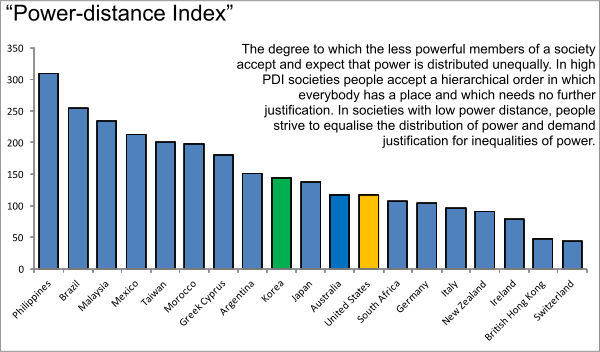
The charts below are taken from Ashleigh Merritt's data, with Korea and the US specifically picked out. The really big differences are in the Masculinity, Uncertainty Avoidance, and Individuality rankings, as shown in the diagrams below. [The descriptions of these factors are taken from Hofstede's own website.]
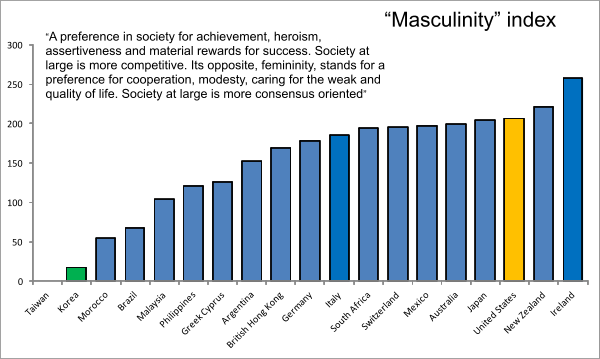
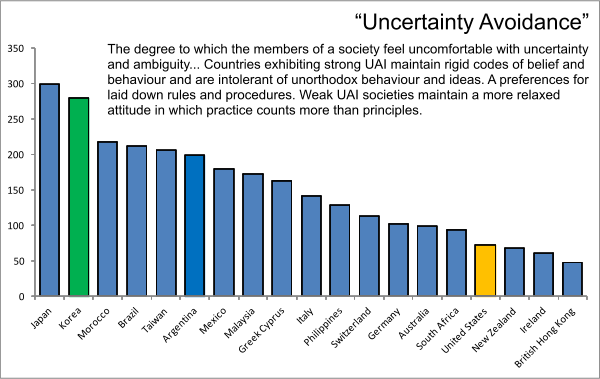
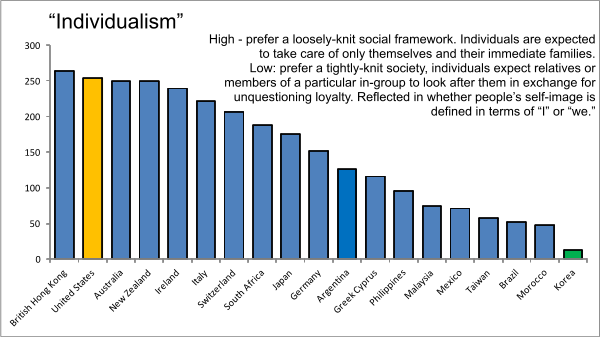
But of course the "culture" issue it is far more complex. As already seen, very different safety results (which are after all the only thing that really matters) can be obtained from socially and technically identical groups of pilots, by varying the internal (fleet level) culture.
In fact, the most significant factor may be the enormous influence individual management pilots have in setting the procedures and culture in the fleets directly under their control.
Hofstede's indices show enormous cultural variations from country to country, but some relevant patterns do seem to exist. This particular graph shows Hofstede's data for employees in 66 countries, a much larger sample than Ashleigh Merritt's pilot-oriented survey quoted by Gladwell. The countries are ranked in order of increasing individualism, and for the moment the actual countries are irrelevant.
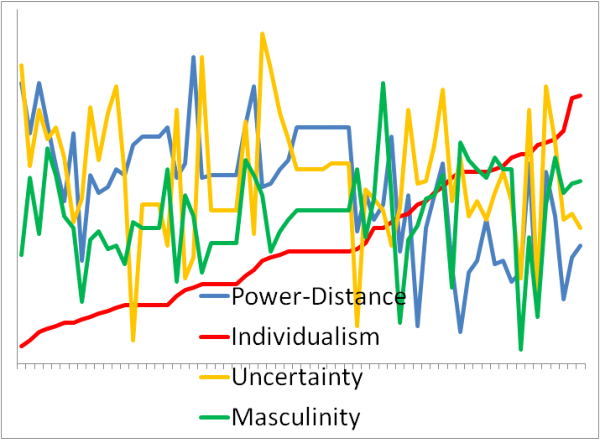
In reality though, all this type of graph does is confirm the rather obvious layman's observation that in some countries there tends to be more acceptance of rules, teamwork and authority than in others, which might translate on the flight deck into greater or lesser ability of First Officers to speak up and correct Captains' errors.
It might however appear to provide some slight justification for the use of the stereotypical "Good Boss/Good Buddies" spectrum used in the discussion of effective monitoring. But it really demonstrates that simply addressing one factor is simply is not going to be sufficient to deal with the huge number of cultural variations that exist.
Merritt found that there were indeed "clusters" of similar cultures in the 19 she studied. For example several English-speaking countries are close to each other, then being joined by some West European ones; Korea, Taiwan and Morocco have similarities, as do Brazil, Mexico and Malaysia, with Japan and the Philippines being very different on some factors.